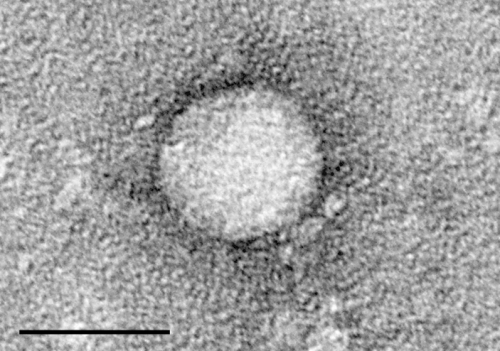Understanding How Sleep Trackers Function and Their Effectiveness

Explore how sleep trackers function, their accuracy in measuring sleep stages, and whether they're a valuable tool for improving sleep health with insights from sleep scientists.
How Do Sleep Trackers Work and Are They Worth It?
Many modern devices, such as smartwatches, fitness bands, and wellness trackers, now include sleep tracking as a core feature. These devices monitor various physiological signals during sleep to provide users with insights into their sleep patterns.
When you wear a sleep tracker—like a watch or ring—overnight, you wake up to a comprehensive report detailing not just total sleep duration but also the timing of different sleep phases and overall sleep quality. This raises the question: how exactly do these devices measure sleep from your wrist or finger?
The Gold Standard in Sleep Measurement
The most precise method for assessing sleep is polysomnography (PSG). During a sleep study, individuals are connected to numerous wires and sensors that track eye movements, muscle tone, heart rate, and brain activity. Experts analyze this data to determine the specific sleep stages and wakefulness.
Sleep cycles through various stages: light sleep, slow-wave (deep) sleep, and REM sleep. Each stage affects brain activity, muscle tension, and heart rate, which explains the extensive sensor setup in PSG. While highly accurate, PSG is inconvenient for everyday use—requiring overnight lab visits and numerous wires.
How Do Wearable Sleep Trackers Measure Sleep?
Since the 1990s, researchers have used actigraphy to estimate sleep patterns outside labs. Actigraphy devices resemble wristwatches equipped with accelerometers that detect movement. The principle is straightforward: little movement suggests sleep, and activity indicates wakefulness.
However, this method can mislabel restful wakefulness, like reading or relaxing, as sleep. To improve accuracy, most wrist-worn devices incorporate photoplethysmography (PPG). This technology uses small green lights on the device’s underside to measure blood flow at the wrist, much like pulse oximeters used by clinicians.
PPG provides raw data about heart rate and breathing rhythms, allowing wearables to estimate sleep stages more precisely when combined with accelerometer data. Since these devices already track physical activity and heart rate, it’s logical for them to monitor sleep as well. But how reliable are these measurements?
Validating Sleep Trackers
The accuracy of these devices hinges on their ability to distinguish between sleep and wakefulness and to identify different sleep stages. Sleep scientists validate trackers by having participants sleep in a lab while wearing the device and undergoing PSG. Their data are compared in 30-second intervals called epochs.
Research shows that most trackers correctly identify over 90% of sleep epochs. That said, they struggle more with wakefulness, accurately detecting between 26% and 73% of wake epochs. For sleep stages, the precision varies, with some recent studies showing certain advanced devices approaching PSG accuracy in detecting light sleep and slow-wave sleep.
Overall, these devices provide a decent estimate of total sleep duration and can be useful for tracking sleep trends over time, even if they don’t match lab-grade precision.
Do You Need a Sleep Tracker?
If you have ongoing sleep problems, consult a healthcare professional. While sleep trackers can help monitor your sleep habits, behavioral changes like maintaining consistent bedtimes, creating a relaxing sleep environment, and reducing evening light exposure play crucial roles in improving sleep quality.
For those who enjoy tracking sleep, choose validated devices. Although detailed sleep staging isn’t essential for general health, accurate detection of sleep versus wakefulness is beneficial. Focus on long-term patterns rather than daily fluctuations.
If a sleep tracker causes stress or anxiety about sleep quality, it might be best to stop using it and prioritize healthy sleep practices instead. Remember, feeling rested and alert during the day is often a better indicator of sleep health than numerical data.
Additional Information
Published by The Conversation, June 24, 2025.
Stay Updated with Mia's Feed
Get the latest health & wellness insights delivered straight to your inbox.
Related Articles
Metabolic Syndrome Elevates Risk of Developing Parkinson's Disease
New research reveals that metabolic syndrome significantly increases the risk of developing Parkinson's disease, emphasizing the importance of metabolic health in neurological well-being.
Understanding How HIV Conceals Itself in the Gut by Hijacking T Cells
Recent research reveals how HIV exploits long-lived T cells in the gut, using the body's immune defense mechanisms as a sanctuary, posing challenges for eradication and cure development.
The Impact of the ACA Preventive Services Mandate on Hepatitis C Treatment and Detection
The future of hepatitis C detection and treatment in the U.S. could be at risk due to the Supreme Court challenge to the ACA's preventive services mandate, potentially impacting millions of Americans' health outcomes and healthcare costs.
New Genetic Data Release to Accelerate Cancer Research
NIST has released a comprehensive pancreatic cancer genome dataset from a consented donor, paving the way for advances in cancer diagnosis, treatment, and research with ethical data sharing and cutting-edge technology.



